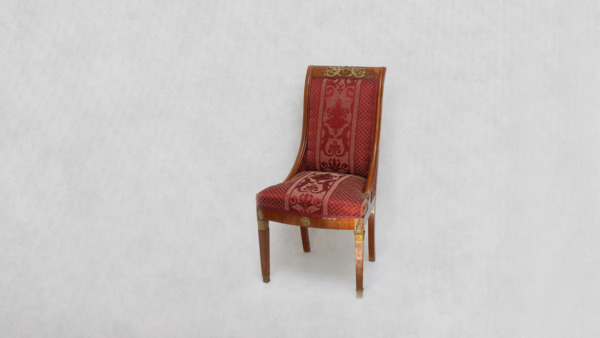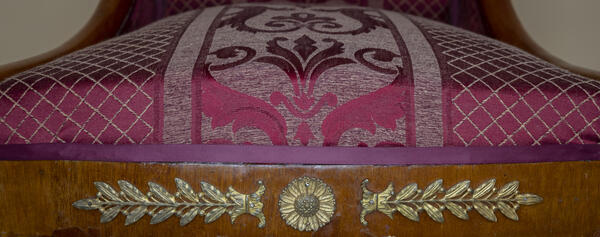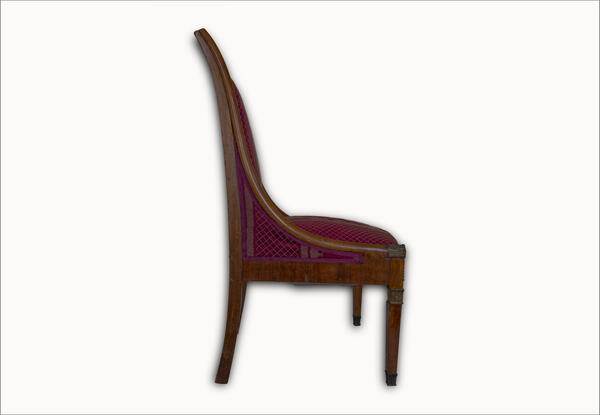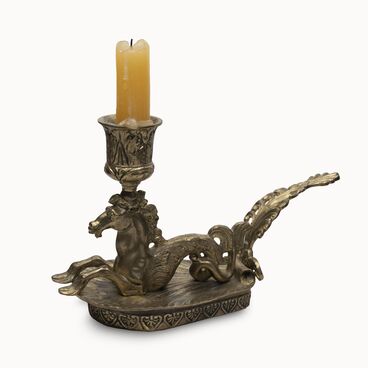The collection of the Decembrists House Museum includes a chair made of curly birch. Its rectangular back is padded with a soft material on one side, while the other one is covered with fabric only. The wood is decorated with bronze figures of ancient gods and floral patterns. The base of the seat is framed with bronze onlays: the center features a gilded round flower with branches of leaves and berries extending from it. The straight legs of the chairs are embellished with bronze inserts. All protrusions and corners, as well as the edge of the legs, are covered with bronze tips. The satin upholstery has a Slavic floral print.
This chair is distinctive for the absence of armrests: it was most likely designated for ladies. Missing armrests, however, were also common to dining room chairs and most office ones.
Armchairs and chairs made in the Russian Empire style are usually very refined, yet simple in form and not overburdened with bronze embellishments. Furniture of this type was characterized by strict proportions and symmetry and was manufactured using mahogany, curly birch, or ash. The legs of such chairs and armchairs are usually smooth, with few bronze decorations. Armrests are often supported by carved figures of eagles, lions, or swans. Legs, especially the front ones, were decorated with motifs of animals, mythical creatures, military trophies, and musical instruments.
When it came to choosing a chair, preference was usually given to that with a rounded, gracefully curved back resembling a washtub. In Russia, such chairs were made with low armrests shaped like swans with smoothly arched necks lengthening into legs. They were manufactured from various types of wood and came in various designs. This type originated in France and was initially intended to go with desks. Over time, however, such chairs were introduced into living room sets. They became widespread not only in royal and noble residences but also in many provincial estates.
This chair is distinctive for the absence of armrests: it was most likely designated for ladies. Missing armrests, however, were also common to dining room chairs and most office ones.
Armchairs and chairs made in the Russian Empire style are usually very refined, yet simple in form and not overburdened with bronze embellishments. Furniture of this type was characterized by strict proportions and symmetry and was manufactured using mahogany, curly birch, or ash. The legs of such chairs and armchairs are usually smooth, with few bronze decorations. Armrests are often supported by carved figures of eagles, lions, or swans. Legs, especially the front ones, were decorated with motifs of animals, mythical creatures, military trophies, and musical instruments.
When it came to choosing a chair, preference was usually given to that with a rounded, gracefully curved back resembling a washtub. In Russia, such chairs were made with low armrests shaped like swans with smoothly arched necks lengthening into legs. They were manufactured from various types of wood and came in various designs. This type originated in France and was initially intended to go with desks. Over time, however, such chairs were introduced into living room sets. They became widespread not only in royal and noble residences but also in many provincial estates.





